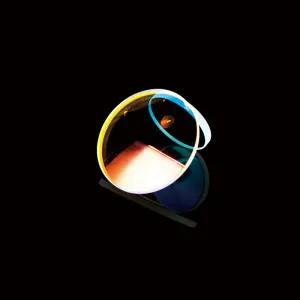What is the thickness of the lens? What are the effects of different lens thicknesses on vision?
What is the thickness of the lens
1. Degree of myopia
The degree of myopia is a major factor in the thickness of the lens. More precisely, the higher the degree of myopia, the thicker the edge of the lens. This is an important reason that everyone knows, and it is unavoidable. After all, the prescription is there, how can the thickness of the lens be thin!
2. The refractive index of the lens
The lower the refractive index of the lens, the thicker the lens. Then it is recommended that friends who are nearsighted should choose lenses with a high refractive index when wearing glasses. And when our degree of myopia does not allow us to choose lenses with a high refractive index, we must also focus on our vision correction purpose.
3. The size of the frame
The size of the frame also affects the thickness of the lens. For myopia glasses, the middle of the lens is thin and the sides are thick. The larger the frame, the thicker the lens will appear. It is recommended to choose a frame with a smaller frame. Pay attention to reasonable collocation! This is only applicable to the fixed matching of myopia! Note that farsightedness is the exact opposite!
4. The difference between pupil distance and frame
The greater the difference between the interpupillary distance and the frame, the more the lens shifts, and the thicker it is naturally! When ordering, you can refer to the following three situations:
①The suitable frame width for small pupil distance (about 60mm) is 45-52mm;
② Moderate interpupillary distance (about 65mm) suitable frame width is 55-56mm;
③The suitable frame width is 54-60mm for larger pupil distance (about 70mm).
5. Types of lenses
Photochromic lenses, polarized lenses, and tinted lenses are thicker than similar ordinary lenses. Because the center color of the photochromic lens is light in order to avoid discoloration, and the edge color is dark, generally the center thickness is thicker. Polarized lenses are also thicker than ordinary lenses because of the selenium crystal polarizing layer in the middle of the lens. Tinted lenses are also thicker than ordinary lenses because the lenses need to be colored at high temperatures to avoid changes in the diopter of the lenses at high temperatures.
Does the refractive index of the lens represent the degree of thickness?
There are relationships. The refractive index of the lens is not only related to your own lens, but to a greater extent is related to the degree of your own eyes. If the degree of your own eyes is higher, the relative refractive index of the eye will be lower. The thickness of the lens will be thicker.
Is there a big difference in thickness between ultra-thin lenses and ordinary lenses?
There is a difference, Tio2 and Pbo are added to the raw materials of the ultra-thin sheet to increase the refractive index to 1.70. Its surface reflectivity is high, and it is about 1/3 thinner than ordinary white or red lenses of one diopter.
Because your degree is higher, it may be slightly thicker than the previous lens, but the ultra-thin lens must be thinner than the ordinary lens for the same degree of lens.
What are the effects of different lens thicknesses on vision?
The influence of the thickness of the lens on the eyesight is that if the lens is too thick, when looking at something with the peripheral vision of the eye, what you see is the thick edge of the lens, and the vision is distorted, just like when you insert a chopstick into a Seeing twisted chopsticks in a glass full of water has the same effect. This is a prism. The thicker the lens, the greater the amount of prisms produced when seeing objects in peripheral vision, and the worse the wearing comfort. The thinner the lens, the thinner the edge, the smaller the amount of prisms, and the improved visual effect is natural and comfortable to wear.
Post time: Aug-01-2023

